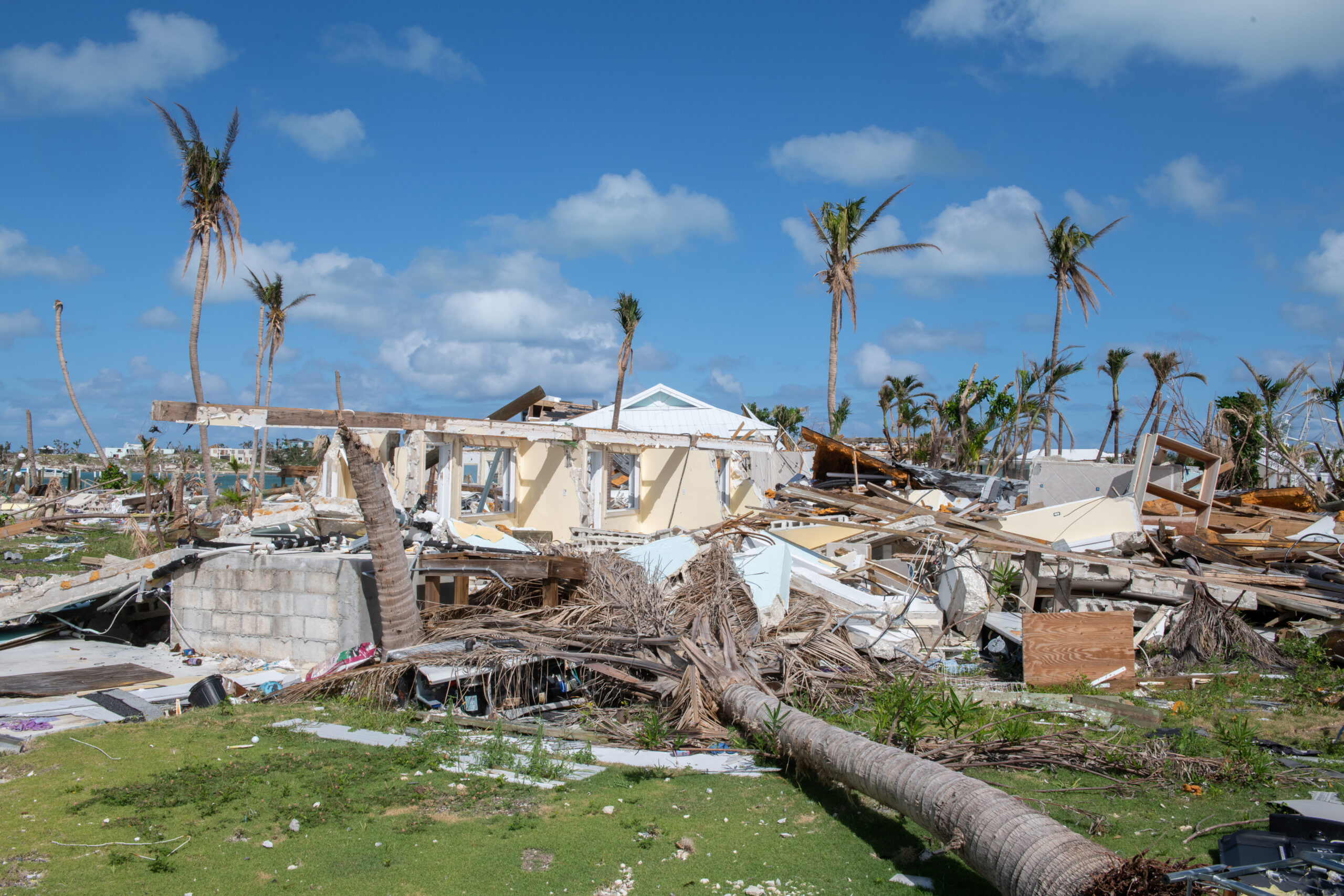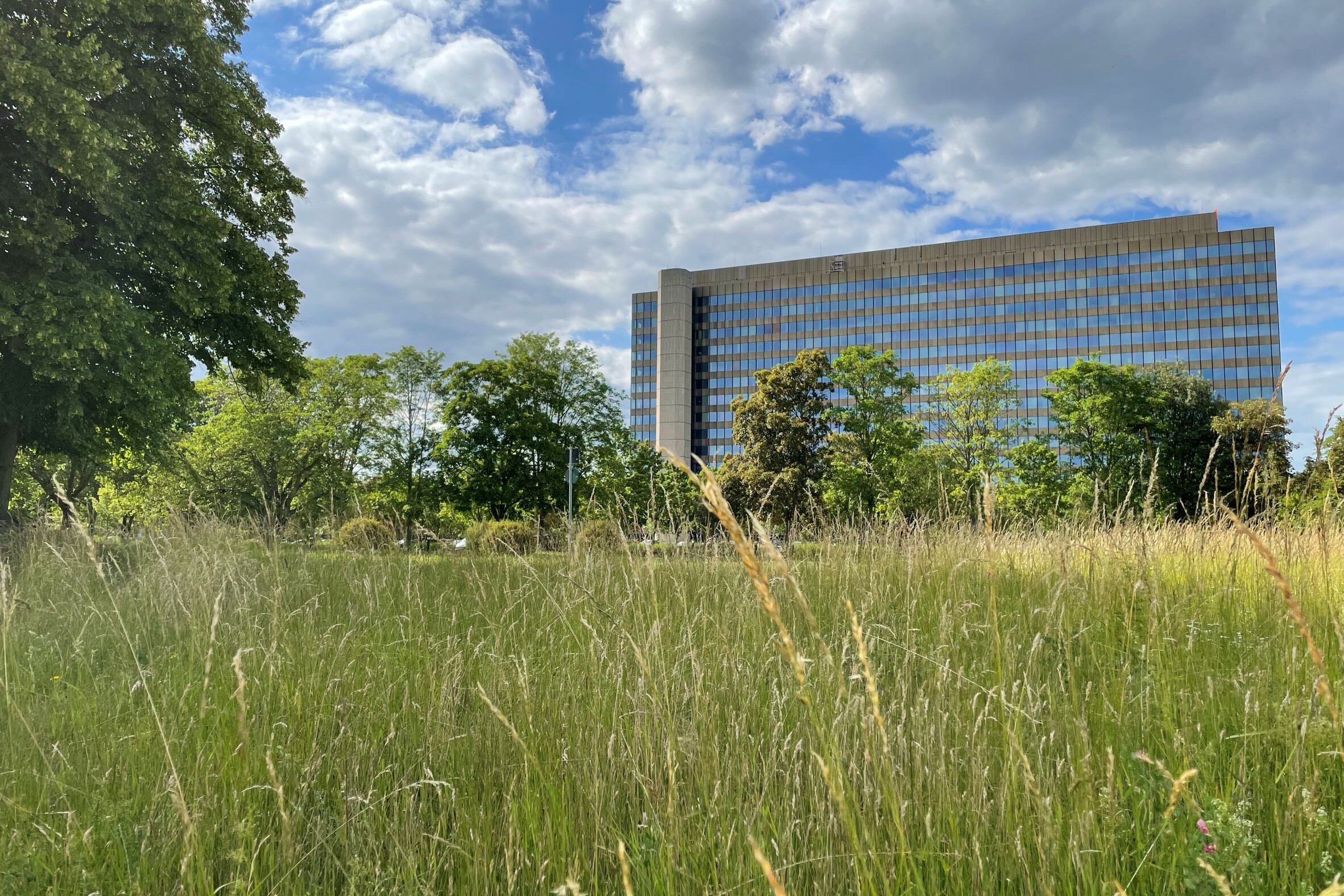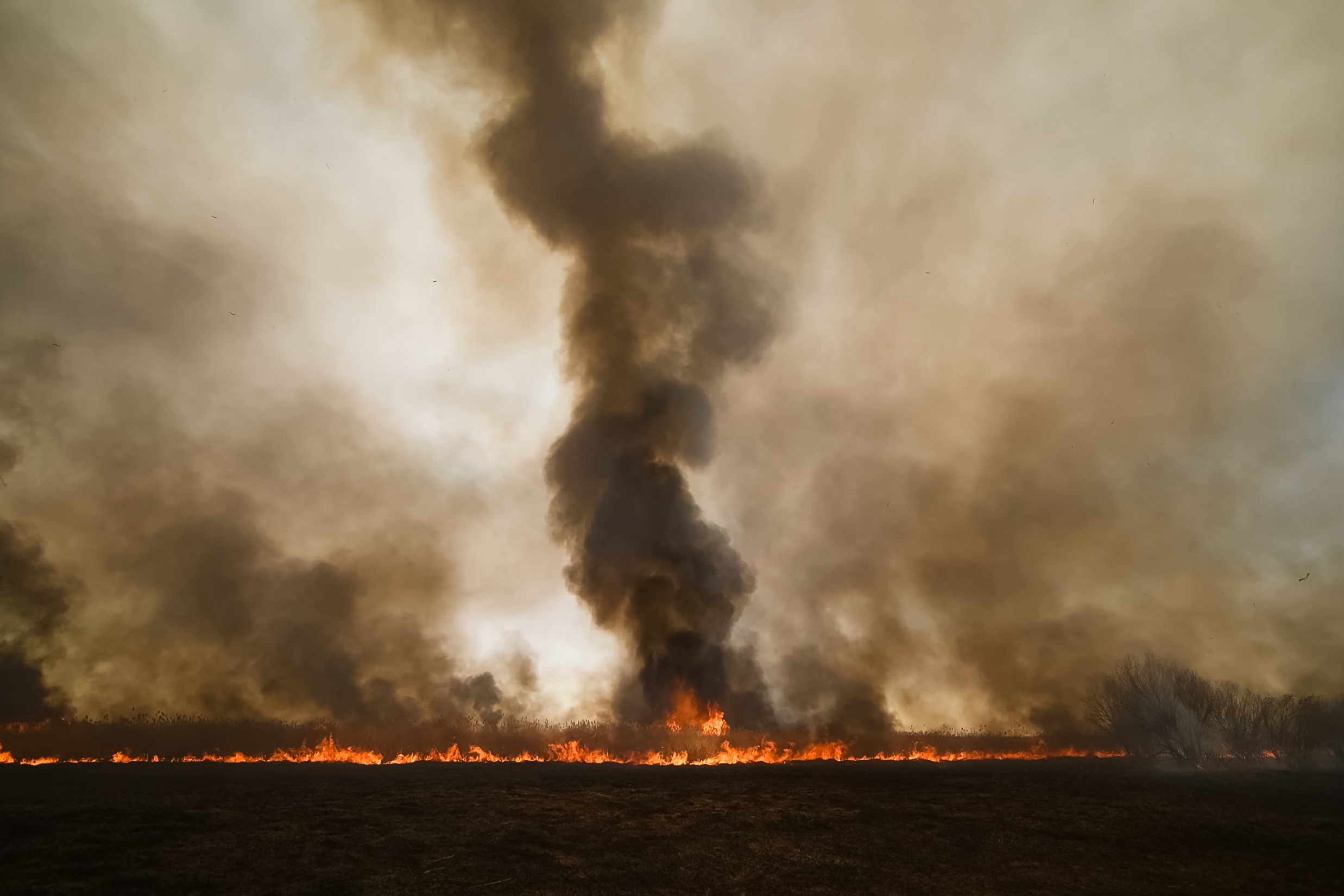WORLD PRESS FREEDOM DAY 2024
“High quality environmental journalism needs all our support”
3rd May 2024
The Director of One World Media on the urgent need for supporting and investing in environmental journalism around the world.

Through its awards ceremony, as well as grants and training opportunities, One World Media (OWM) – a UK registered charity – sets out to encourage and celebrate more and better quality reporting from the Global South.
One of OWM’s awards spotlights environmental reporting – journalism that explores the relationship between people and the planet in the Global South. The Award recognises impact and creativity in telling an environmental story.
Last year, the award was given to Ankur Paliwal for this story in The Guardian: ‘It was a set-up, we were fooled’: the coal mine that ate an Indian village .
“With the rise of authoritarian regimes across the world, covering the environmental crisis is becoming both increasingly difficult and important, especially in the global south. The shrinking reporting budgets in most newsrooms further adds to this challenge. I would like to see independent journalists, who often work without safety nets in dangerous situations, get more support and resources to be able to do their jobs of uncovering environmental frauds and holding the powerful accountable without fear.”
– Ankur Paliwal, recipient of the 2023 Environmental Reporting Award
With World Press Freedom Day this year centred around environmental journalism, the Public Media Alliance’s Development and Communications Manager, Keiran Turner, spoke with the Director of OWM, Vivienne Francis, about the state of environmental reporting around the world, its challenges, and its future.
N.B. This interview has been edited for brevity and clarity.
Keiran Turner: Why is quality environmental journalism worth our support?
Vivienne Francis: We’ve just been looking at the numbers RSF published for Earth Day and they are sobering. Almost 200 journalists in the last ten years have faced threats and physical violence, including murder, because they were working on stories linked to the environment. We’re reminded of Dom Philips and Bruno Araújo Pereira who were killed less than two years ago for reporting in the Amazon. And still, there’s such an urgent need to tell more environmental stories, better stories about the environment. The climate crisis is worsening and high quality environmental journalism needs all our support.

KT: What press freedom concerns are you seeing regarding environmental journalism?
VF: Like with all journalism, hearing about one side of the story is always dangerous. We need more journalism that shows the interconnectedness of the problem. We were just in Perugia at the International Journalism Festival, where at one of the panels we heard how difficult it is to find good environmental journalists in Africa. And this is not exclusive to Africa. We need better training programmes that are accessible to journalists in more parts of the world so that we’re creating a generation of storytellers who can document what is happening to the planet. And considering how dangerous this reporting is, we need better protection for the journalists who do this work.
“I would like to see independent journalists, who often work without safety nets in dangerous situations, get more support and resources to be able to do their jobs of uncovering environmental frauds and holding the powerful accountable without fear.” – Ankur Paliwal, recipient of the 2023 environmental impact award
KT: Why are OWM awards useful in supporting environmental journalism?
VF: For the past few years, the Environmental Reporting category has received the highest number of entries amongst the 15 categories. This shows an appetite not just to tell these stories but also of audiences interested in this information. The OWM Awards highlight these topics but they’re particularly important because we’re looking for underreported stories from the global south. Despite various efforts, these stories still don’t receive the coverage they deserve in mainstream media. Our Awards play a role in bringing these journalists and the stories they tell greater global visibility and recognition.
Listen toour podcast
Uncovering and exploring the biggest
issues facing public media
KT: How do you engage with journalists and media organisations in regions disproportionately affected by environmental crises, ensuring their voices are heard and supported?
VF: We work with a wide network of partners across the global south many of whom focus on environmental issues. We share their opportunities and news with our network to encourage them to apply and participate. Similarly, we want them to share our updates with local journalists and filmmakers to be part of our programmes. When we host events overseas, we recruit local talent to speak on panels and as trainers at workshops. In addition to the Awards, each year we try to reach more regions and people with our programmes. The Fellowship, for example, is aimed at supporting early-career professionals with access to mentorship, training and a peer group.
Read more: Climate journalists are struggling. Newsrooms should develop a mental health strategy to help them cope (Insight)
KT: Can you share some success stories or memorable examples of environmental journalism nominees that have been supported or recognised by One World Media, and the impact they have had on local communities or wider audiences?
VF: Our 2023 Environmental Impact winner, Ankur Paliwal, reported about a coal mine in India. This is a widely reported issue but he found a lesser known angle to focus on which helped bring awareness to the reality of the local indigenous community. Our 2022 winner as well was a film which told the story of the indigenous Sarayaku community in the Ecuadorian Amazon during lockdown.
And these narratives aren’t limited to this category. Our 2023 Feature docs winner was about a non-binary indigenous performance artist in Brazil who wants to spread a message of conservation and promote LGBTQ+ rights. The same year, one of our alumni won the Short Film category for reporting about an indigenous community in a forest in India and their relationship with the leopard native to the region.
These stories are about neglected parts of the world we would know even less about if not for these in-depth pieces that are highly produced and visually beautiful.
KT: What major developments are you seeing in environmental journalism, especially around data journalism and the use of AI? And how is this impacting the type of content you are seeing?
VF: Everything is now AI! More seriously, AI can be useful in the future to trawl through data and make sense of it. Same with numbers and statistics. Journalists will need to find interesting ways to break down and represent this complex information in a way that’s visually engaging so those skills will be valuable.
But more than the content, we’re seeing plenty of debates within AI which need attention first. AI has been built primarily in English, mostly by men, for use in Global North countries. Until these barriers are addressed to make the technology more inclusive and less sexist, especially because there’s no regulation on it, we can’t really discuss its use in journalism in a way that’s fair.
“Despite various efforts, these stories still don’t receive the coverage they deserve in mainstream media. Our Awards play a role in bringing these journalists and the stories they tell greater global visibility and recognition.” – Vivienne Francis, Director of OWM
KT: What are the key challenges facing journalists reporting on the environment? Especially those in non-G20 countries?
VF: I’ve mentioned some of these above. Lack of access to training, protection of journalists, decolonising of AI. I’d add funding, which is crucial to bring these projects to life and raise awareness.
KT: Reports show that news avoidance is on the rise, especially around huge challenges like climate change – how are journalists adapting to mitigate this?
VF: It’s difficult whichever way you look at it. But young people are interested in the news. It just depends on how and where you share it with them. Part of this means having to get more creative with formats like TikTok, YouTube, Instagram reels or Netflix, newsletters and podcasts. The journalists who do this well tend to become independent brands and influencers.
Some of this comes down to old-fashioned journalism. Our Women’s Solutions Reporting winner in 2023 is not an online “influencer” in the traditional sense. But he’s been telling some incredible stories in rural India at the intersection of gender and climate change in a way that is rarely seen otherwise. One of his latest, for example, looks at how climate change, which disproportionately affects women, threatens more than 300 million of childbearing age with anaemia. For the details, you’ll have to read the story. It’s the kind of “connect the dots” reporting we need so much more of.

KT: What trends or themes are emerging in environmental journalism/content produced by journalists from the Global South, and how do these differ from mainstream narratives or perspectives?
VF: In Old News, a media startup, recently started building a video archive of climate change footage. This is to address how little licence-free content is available from Asia, Africa and Latin America, compared to footage from the US or Europe for journalists reporting about the environment to use. So In Old News is collaborating with a few organisations to create a free digital library of materials like glaciers, rising sea levels, mangroves and renewable energy. We hope creating similar resources becomes more of a priority and that newsrooms use them widely. It will help to make mainstream media more representative and varied.
And a few months ago, Earth Journalism Network launched a project to increase awareness about renewable energy in India. The organisation was supporting filming of video content in multiple languages to produce high quality information and make it available to decision makers like investors and the government.
It’s encouraging to see these ideas applied in the real world. To accurately reflect what’s happening around us, it’s important our media is nimble and constantly evolving too.
KT: Looking ahead, what are some of the priorities or focus areas for One World Media in supporting and promoting environmental journalism from the Global South, and how do you envision the future of this field evolving?
VF: This is only about to become bigger and more necessary. So apart from the Awards, we will see many more environmental stories come in through our other programmes, like the Fellowship. Our priority will be to support as many stories of these as we can, to encourage as many early-career journalists through connections, mentorship, workshops and where possible, funding, to develop the necessary skills to do this work, in a way that’s sustainable, financially and to their wellbeing. Recently, we’ve been very proud of our 2022 Fellow, Pawanjot Kaur, who was commissioned and published by the FT for her film about a coal reliant community in India. You can watch her film here. And from the same cohort, Alison Lemeri Francis, a refugee journalist in Uganda, has talked about how the Fellowship helped him find his focus to tell climate solutions stories. Finally, Biswajit Das from the 2023 Global Short Docs Forum has produced a film about an innovative solution to protecting rice crops from elephants, which was published by Mongabay. The film is available to watch here.
Related Posts
26th October 2023
Why newsrooms should have mental health strategies for climate journalists
It’s time to recognise that climate…
16th September 2022
How ZDF is on the way to becoming a climate-neutral public media organisation
Discover German public broadcaster…




